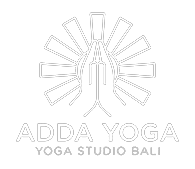Yoga for Beginners: A Complete Guide to Get Started

Beginners Welcome to Yoga!
Yoga is a practice that has been around for centuries as a kind of physical activity. It is a fantastic method to maintain your health and fitness and can aid in better stress management.
Although yoga has numerous advantages for beginners, getting started might be difficult.
This article will provide some helpful advice on how to begin practicing yoga for beginners if you are considering it but are unsure of where to begin.
Knowing where to begin while practicing yoga for the first time can be scary and challenging.
Our handbook, Yoga for Beginners, was written just to provide you with all the advice, principles, and suggestions you’ll need to begin a fruitful yoga practice.
We strongly advise you to read this before beginning yoga to ensure success.
History of Yoga & What is Yoga?
To achieve a state of enlightenment or oneness with the universe, yoga integrates mind, body, and spirit through an extensive collection of spiritual practices and procedures.
In reality, Hatha Yoga is among the various famous and ancient forms of yoga. Hatha is the foundation of all modern yoga styles.
Although the many yoga traditions emphasize various methods and practices, they all ultimately lead to the same state of union and enlightenment.
Yoga was first practiced as a philosophy of the universe in India.
The physical aspect of yoga was primarily focused on a few seated poses and breath control during a large portion of its early history to support the practice of intense meditation.
Physical postures started to become more critical in the late 19th and early 20th centuries.
The teachings of Indian yoga teachers were first brought home by Western tourists in the 1970s, and in some cases, they were modified to match modern lifestyles.
That marked the start of what is now known as the popular yoga movement in both Europe and America.
How to do Yoga & Things to Keep in Mind
Yoga is often practiced barefoot on a soft yoga mat with added props and equipment for support.
Clothing that can stretch and move freely with your body is necessary for yoga poses and motions.
Although you can buy clothes made especially for yoga practice, you can certainly pull together a cozy outfit from your current wardrobe to start.
Additional props may be used in yoga lessons; the most popular ones include straps, blocks, blankets, and bolsters.
You don’t need to buy things right away because pillows, a stack of books, scarves, or ties can readily take their place.
A yoga studio will supply all the necessary equipment you need if you enroll in professional yoga classes there.
What Happens in a Yoga Class?
Asana (postures), pranayama (breathing exercises), and meditation are the three main components of modern yoga practice.
Yoga can be done at home, in a group class, or as a private session with an instructor.
The easiest way to get started is by enrolling in a group class.
Typically, yoga sessions last 60 to 90 minutes.
Before entering the yoga room, take off your shoes and turn off (no ringing or honking!) your phone.
Typically, students set up their mats facing the front of the room in rows.
Make sure you can see the teacher because there can be a lot of posture demonstrations in a beginner’s class, which you must observe closely.
Since breathing is an excellent method to start feeling present and centered, classes frequently begin by having everyone pay attention to their breathing.
Then there can be some stretches for warming up before a series of more challenging standing positions.
Once the body is warmed up, deeper stretches and backbends will come next.
Every session concludes with a few minutes of relaxation on your mat. Savasana (Corpse Pose) is the name for a totally relaxed posture.
With total relaxation, your body and brain can better absorb the advantages of the challenging physical experience you just had during this stillness break.
When and How Often Should I Practice Yoga?
Your flexibility, range of motion, strength, balance, inner calm, and general well-being will significantly increase if you practice yoga three or more times weekly.
Our ideal recommendation is for 20–45-minute sessions, spaced out over a few days, lasting a total of 3–4 hours.
Less yoga practice will still be helpful, but you will witness only slower progress over a more extended period.
Like other things, the more time you invest in it, the more rewards you will get.
Importance of Proper Alignment
To maximize the physical advantages and reduce the danger of injury, each yoga pose must be performed precisely.
Hence, don’t be ashamed of using support!
Instead of making alignment compromises that result in instability, injury, and difficult-to-break posture habits, performing a posture with strong alignment integrity with the added support of props is preferable.
Always add support whenever you feel you need it.
The Final Note for Beginner Yogis
The elements of learning and improving your yoga practice are perseverance, dedication, repetition, and consistency.
Try these suggestions to advance your practice after discovering a yoga style, instructor, and studio that works for you.
Set up regular yoga sessions or at-home sessions. Increase the duration and number of practice sessions you have each week.
Journal the effects of regular yoga practice on your body, mind, and heart. Attend yoga courses that concentrate on particular areas of yoga in more depth.
Find inspirational sources and role models. Join a yogi community and make friends who practice yoga. Adopt a yogic way of thinking as your lifestyle.
We hope this guide will help you learn something new. Thanks for reading! 😀
